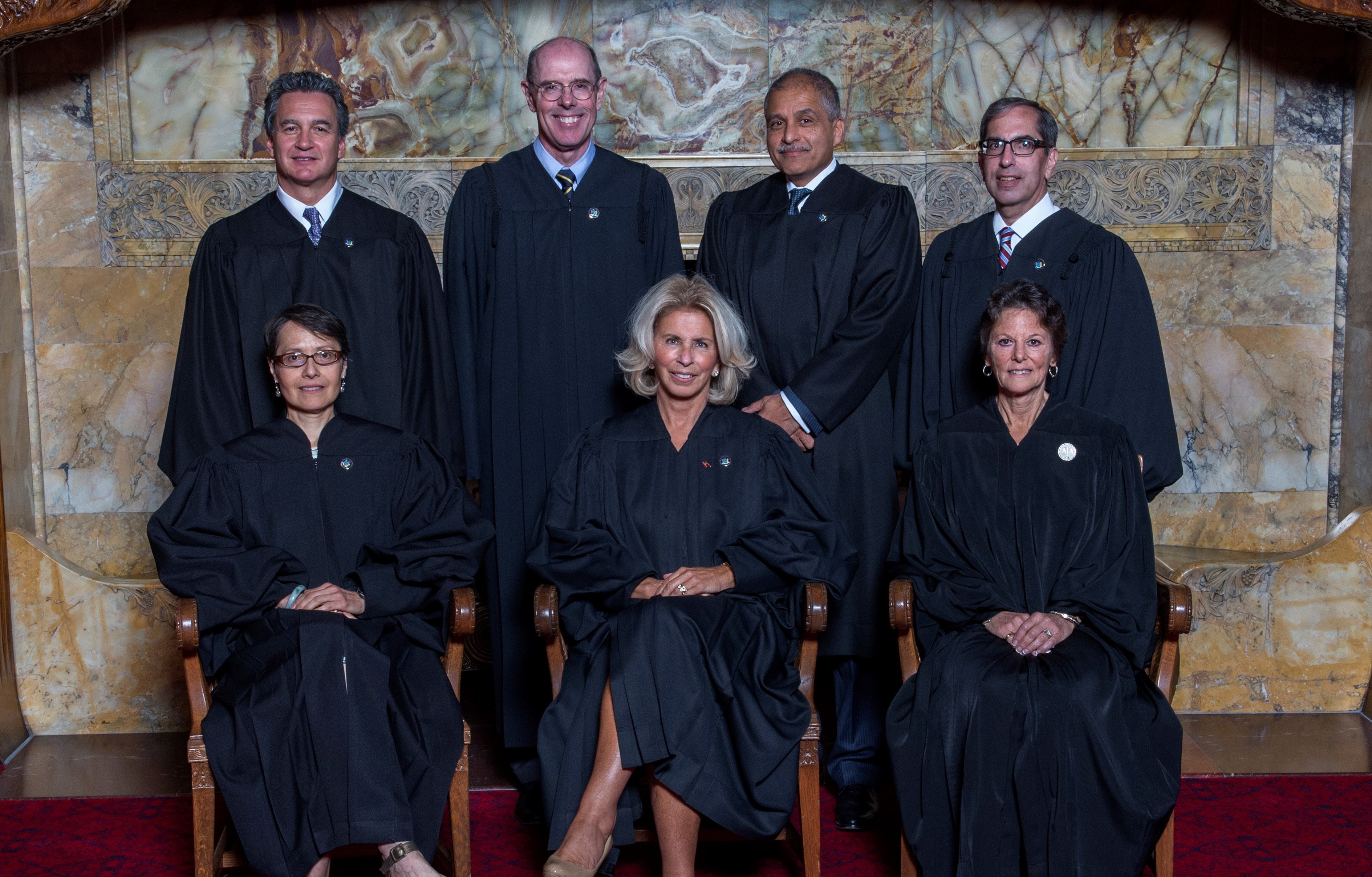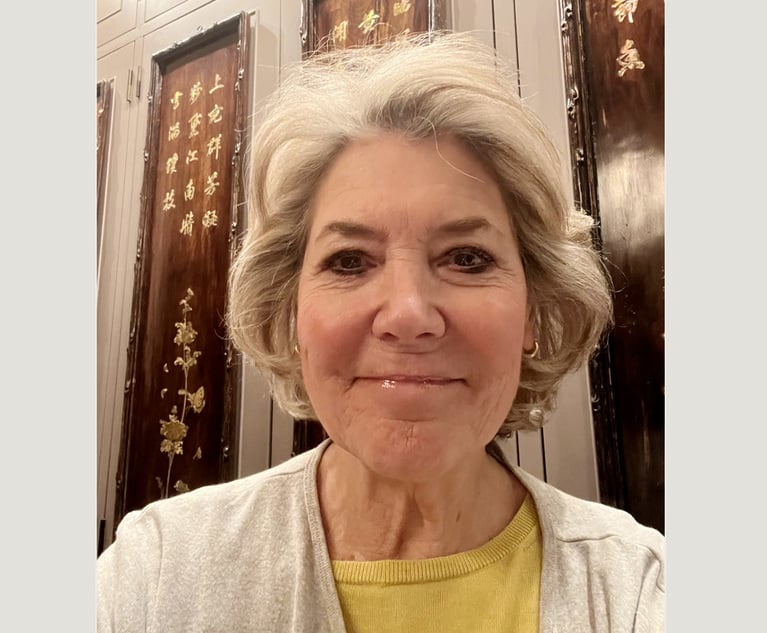Appellate Judges Should Value the Institution Over the Individual
Each member of an appellate tribunal should deeply appreciate that she or he constitutes but a part of the total entity; and each jurist is thus entrusted to serve the higher purpose, not that of a momentary attention-grabber.
January 25, 2019 at 11:33 AM
6 minute read
 From left, standing: Judges Michael Garcia, Eugene Fahey, Rowan Wilson and Paul Feinman. Sitting: Judge Jenny Garcia, Chief Judge Janet DiFiore and Judge Leslie Stein.
From left, standing: Judges Michael Garcia, Eugene Fahey, Rowan Wilson and Paul Feinman. Sitting: Judge Jenny Garcia, Chief Judge Janet DiFiore and Judge Leslie Stein.
The bursts of discussion in the N Y Law Journal recently about the value of dissenting opinions and any appellate jurist's right or passion to issue them seems to miss an essential consideration – institutional purpose. Their common theme and tenor concentrate on and elevate the tail to the greater importance of the dog. By that metaphor, I mean that the focus is skewed away from the tribunal's majority ruling itself and the objective to chart and settle the law through a guiding precedent of the court, not through diffusion of multiple individual voices. None of the recent expressions pay sufficient heed and respect to that key contextual foundation stone, to wit, the raison d'etre of the particular appellate tribunal.
The latter consideration, I respectfully submit, should be front and center as a consideration to the discussion of the value of dissenting opinions. A threshold question to be internally posed is: would a particular additional opinion serve the development of the jurisprudence and how do different kinds and levels of dissenting opinions fit that higher purpose of appellate courts?
To be sure, differences apply with respect to the role of an intermediate appellate court and a court of last resort. My differing emphasis is directed at the work of a court of last resort and is the result of the passage of almost 20 years since my retirement from the Court of Appeals and after more than 40 years since I arrived there as clerk in 1975. My direct experience at the Court of Appeals thus spanned the last quarter of the last century, so it may be perceived as faded.
I also served as chief administrative judge, and pertinently negotiated chapter 300 of the Laws of 1985 – the substantial reduction of the mandatory civil docket of the Court of Appeals from over 700 argued appeals per annum (civil and criminal appeals) to fewer than 200 in both categories. The goal of that effort was to allow the court of last resort to apportion its finite time to the relatively most important issues and cases that fit its purpose.
With those credentials for what follows, along with a few heavy-hitter resources to whom I refer and upon whom I rely, I submit that (a) the Court of Appeals is the better forum to control its docket, not the intermediate appellate courts or individual justices serving thereon, despite their acknowledged narrow range of authority that ought to be extremely prudentially exercised; and (b) that a great many dissents (and concurring opinions fail to measure up to the rigorous test of institutional purpose.
Almost 100 years ago, New York's most pre-eminent jurist articulated the twin purpose of the court he especially loved, served and led so peerlessly as chief judge – (a) decide the particular case, to be sure; and (b) even more importantly, promulgate the legal principles with clear, reliable and well-settled guidance and finality [as it especially pertains to the court-of-last-resort] (The Nature of the Judicial Process, seriatim [The Storrs Lectures at Yale, 1921]).
One of Judge Cardozo's outstanding judicial successors – Associate Judge Hugh R. Jones (1973-1984) – provided modern-day clarity concerning that overarching goal in his important Cardozo Lecture at the Association of the Bar of the City of New York in 1979. (“Cogitations on Appellate Decision-Making” – Nov 28, 1979). One of the key takeaways was that institutional values trump personal expressions. He did not urge a total bar, any more than I do (especially as a self-confessed disobedient student of the prudential restraint during my own judicial tenure). His point, I think, was that each member of an appellate tribunal should deeply appreciate that she or he constitutes but a part of the total entity; and each jurist is thus entrusted to serve the higher purpose, not that of a momentary attention-grabber, be it through a fine but unnecessary dissent or self-indulgent concurrence no matter how heartfelt or conscience-driven by “mirror-mirror-on-the-wall-who-is-fairest” justifications for letting a separate opinion fly. Alternative, differing and additional contributions of opinions for the development of the jurisprudence and future improvement of the law need to measure up to higher and stricter standard to qualify as worthy of service to the purpose of the institution. Judge Jones wryly observed that if a jurist wants to expose to the world his or her lack of persuasive prowess to convince colleagues of the correctness of a viewpoint, publishing an institutionally unqualifying dissent surely would do the trick.
When the late Chief Judge Charles D. Breitel occupied the center-chair chief's responsibility at the Court of Appeals in the mid to late 1970s, he employed a not-so-subtle nudge in many such circumstances around the conference table of seven, to wit: would-be dissenters and concurrers were urged to circulate proposed alternative writings for “internal irritation” that might help to sharpen a majority court writing; a firm suggestion followed thereafter that the “extra” (superfluous?) writing be withdrawn before external release of the decision of the court so as to better serve the higher institutional goal.
Institutional purpose, in the end, is not the same as collegiality and consensus, as important as those values are, too. The overarching goal then is the real essence, the sine qua non that serves the raison d'etre of a particular appellate tribunal that is a collective entity, not a collection of individuals.
Joseph Bellacosa is a retired Court of Appeals judge.
Read More:
DiFiore Presses Appellate Judges to Send Fewer Appeals to High Court
Chief Judge's Inquiry Into Dissents Intrudes on Judicial Independence
Iron Sharpens Iron: The Value of Dissent, and Collegiality, in Appellate Courts
Why the Appellate Division Shouldn't Have To Speak in a Unified Voice
This content has been archived. It is available through our partners, LexisNexis® and Bloomberg Law.
To view this content, please continue to their sites.
Not a Lexis Subscriber?
Subscribe Now
Not a Bloomberg Law Subscriber?
Subscribe Now
NOT FOR REPRINT
© 2025 ALM Global, LLC, All Rights Reserved. Request academic re-use from www.copyright.com. All other uses, submit a request to [email protected]. For more information visit Asset & Logo Licensing.
You Might Like
View All
Attorney Responds to Outten & Golden Managing Partner's Letter on Dropped Client
3 minute read
Letter to the Editor: Law Journal Used Misleading Photo for Article on Election Observers
1 minute read
NYC's Administrative Court's to Publish Some Rulings in the New York Law Journal Is Welcomed. But It Should Go Further
4 minute readTrending Stories
Who Got The Work
J. Brugh Lower of Gibbons has entered an appearance for industrial equipment supplier Devco Corporation in a pending trademark infringement lawsuit. The suit, accusing the defendant of selling knock-off Graco products, was filed Dec. 18 in New Jersey District Court by Rivkin Radler on behalf of Graco Inc. and Graco Minnesota. The case, assigned to U.S. District Judge Zahid N. Quraishi, is 3:24-cv-11294, Graco Inc. et al v. Devco Corporation.
Who Got The Work
Rebecca Maller-Stein and Kent A. Yalowitz of Arnold & Porter Kaye Scholer have entered their appearances for Hanaco Venture Capital and its executives, Lior Prosor and David Frankel, in a pending securities lawsuit. The action, filed on Dec. 24 in New York Southern District Court by Zell, Aron & Co. on behalf of Goldeneye Advisors, accuses the defendants of negligently and fraudulently managing the plaintiff's $1 million investment. The case, assigned to U.S. District Judge Vernon S. Broderick, is 1:24-cv-09918, Goldeneye Advisors, LLC v. Hanaco Venture Capital, Ltd. et al.
Who Got The Work
Attorneys from A&O Shearman has stepped in as defense counsel for Toronto-Dominion Bank and other defendants in a pending securities class action. The suit, filed Dec. 11 in New York Southern District Court by Bleichmar Fonti & Auld, accuses the defendants of concealing the bank's 'pervasive' deficiencies in regards to its compliance with the Bank Secrecy Act and the quality of its anti-money laundering controls. The case, assigned to U.S. District Judge Arun Subramanian, is 1:24-cv-09445, Gonzalez v. The Toronto-Dominion Bank et al.
Who Got The Work
Crown Castle International, a Pennsylvania company providing shared communications infrastructure, has turned to Luke D. Wolf of Gordon Rees Scully Mansukhani to fend off a pending breach-of-contract lawsuit. The court action, filed Nov. 25 in Michigan Eastern District Court by Hooper Hathaway PC on behalf of The Town Residences LLC, accuses Crown Castle of failing to transfer approximately $30,000 in utility payments from T-Mobile in breach of a roof-top lease and assignment agreement. The case, assigned to U.S. District Judge Susan K. Declercq, is 2:24-cv-13131, The Town Residences LLC v. T-Mobile US, Inc. et al.
Who Got The Work
Wilfred P. Coronato and Daniel M. Schwartz of McCarter & English have stepped in as defense counsel to Electrolux Home Products Inc. in a pending product liability lawsuit. The court action, filed Nov. 26 in New York Eastern District Court by Poulos Lopiccolo PC and Nagel Rice LLP on behalf of David Stern, alleges that the defendant's refrigerators’ drawers and shelving repeatedly break and fall apart within months after purchase. The case, assigned to U.S. District Judge Joan M. Azrack, is 2:24-cv-08204, Stern v. Electrolux Home Products, Inc.
Featured Firms
Law Offices of Gary Martin Hays & Associates, P.C.
(470) 294-1674
Law Offices of Mark E. Salomone
(857) 444-6468
Smith & Hassler
(713) 739-1250







